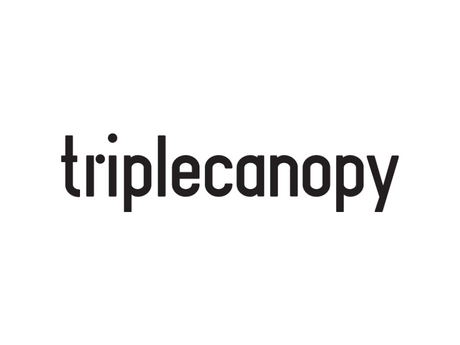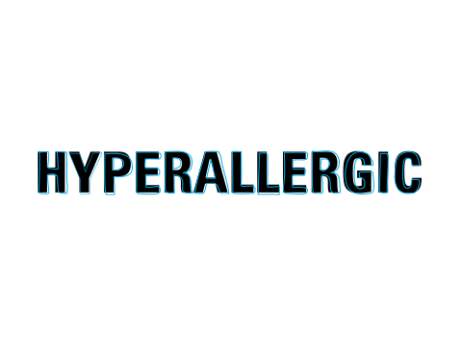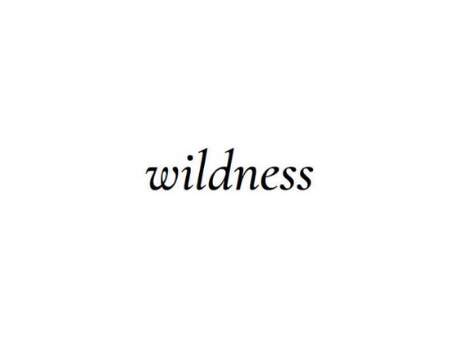Site Visits
Lucy Ives and Molly Kleiman on Triple Canopy

Tell me about the creation of Triple Canopy. When and how and why was it conceived?
Molly Kleiman: Triple Canopy came into being in the summer and fall of 2007; its first issue was published on March 17th, 2008. The project was devised and brainstormed by a group of friends, colleagues, and then-acquaintances over email, Skype, in a Fort Greene living room. Over the course of those early months, some 60 people moved in and out of the conversations. Though many were based in NYC, I was living in Sarajevo, and others were in Los Angeles, Berlin, Milwaukee, Mozambique. The magazine was a response to a need for an original framework that would facilitate sustained and enjoyable experiences of art and literature online. At this time, the Internet seemed inhospitable to this sort of work, not to mention to the slow, immersive reading and viewing experiences that now characterize Triple Canopy's online magazine. And so we spoke often about working "with and against the medium."
Lucy Ives: Triple Canopy's editors had to start from scratch: by building a content management system that would accommodate various media formats and text within a horizontally scrolling format; by figuring out how to integrate substantive editorial conversations with contributors into a challenging design process. The magazine you read now is the result of five years of intensive collaborative skill-sharing among the editors, curators, art historians, Web developers, and artists who make up Triple Canopy's staff.
I was first a contributor to the magazine, and then in 2010 editor Sam Frank invited me and Dan Visel to join the magazine to edit a special literary issue, Counterfactuals, that came out in fall 2011. I had such a good time that I never left! I am continually amazed by what we can accomplish working collectively, learning from one another's abilities and interests. I feel very lucky to be involved.
What makes Triple Canopy different from other places to read poetry on the Internet?
Lucy Ives: Each Triple Canopy piece is the result of a long conversation between one or more Triple Canopy editors and the contributor. We meet in person and discuss drafts over email, generally for at least three months, before the work is finalized. But often this process even takes a bit longer! It wouldn't be unusual for us to spend six months or a year working on drafts and having conversations with a contributor. This means we get to know the poets and writers we work with, and often there are unexpected changes and inspirations. There is something of a workshop climate to what we do, in this sense—though our hope is not to impose our vision on the contributor, but to do the best we can for his or her work.
Because our medium is the Internet, we're able to incorporate sound files, video, and other media into poetry pieces. We try to do this in a way that feels purposeful and useful to the writing. Each of the poetry pieces you read online in Triple Canopy is usually slightly longer than a single "poem," so perhaps each is more like a chapbook or a poetic series you might find within a larger unit, like a book. We're trying to create a reading experience that draws you in and allows you to linger a while, much as you might linger over a certain section of a book.
What is something that you have recently published that really excited you, and why?
Lucy Ives: One long-term poetry-related project that Triple Canopy recently completed was our contribution to the Museum of Contemporary Art Denver's show "Postscript — Writing After Conceptualism." This was an amazing opportunity for us to explore the relationship between print and digital publishing—and to think more about what bearing this relationship might have on contemporary writing.
The project culminated in a book, Corrected Slogans: Reading and Writing Conceptualism, which was published in January. The book represents a collective effort by artists, poets, scholars, editors, curators,and designers to establish new critical discourse around conceptual art and poetics. In the course of putting this book together, Triple Canopy held a series of public discussions and created a special issue of the online magazine (which was displayed at MCA Denver via QR codes affixed to the walls of the galleries.) Corrected Slogans: Reading and Writing Conceptualism documents these public discussion and the special online issue, but also elaborates, edits, and amplifies these materials using tools specific to print, even while incorporating language and strategies seemingly particular to the Web. (Franklin Vandiver, our designer, deserves great praise for making this all work, and beautifully.) There are audience comment cards; documentary photographs fictionalized by the addition of an alternative narrative in captions; an excruciatingly detailed index (written by me on Christmas eve) in place of a table of contents. We see the project as an enactment of the literary and artistic practices under consideration, not simply a critical commentary. Contributors to the book include poets, artists, and critics: Nora Abrams, Andrea Andersson, Erica Baum, Franklin Bruno, Corina Copp, Michael Corris, Brian Droitcour, Jim Fletcher, Zachary German, Lucy Ives, Aaron Kunin, Margaret Lee, Paul Legault, K. Silem Mohammad, Ken Okiishi, R. H. Quaytman, Katie Raissian, Ariana Reines, William S. Smith, Mónica de la Torre, Gretchen Wagner, Hannah Whitaker, and Matvei Yankelevich.
Molly Kleiman: Corrected Slogans moved between several mediums—the online project, the exhibition, the public conversation, the printed codex. We see all these activities as constituting publication. Right now we are in the midst of redesigning Triple Canopy, in an attempt to better articulate and visualize for readers the relationships between these aspects of publication and the way in which we use publication to sustain inquiry over time, on- and off-line.
And we're really excited about Speculations ("The future is ______"), a project we're doing currently as part of the MoMA PS1 exhibition Expo 1: New York. This project entails 50 days of speculations on the future—bets on a future we might actually want to inhabit, and which might make demands on the present—with novelists, poets, artists, scientists, philosophers, economists, within an installation created with artist José León Cerrillo.
What should someone submitting new work to Triple Canopy know about the site?
Molly Kleiman: We're always open to receiving submissions through our online submissions form. We recommend that potential contributors read and view past projects published in the magazine as a way to help envision how their work might take shape either online, as a printed project, or a public program. We like to open a dialogue with contributors, so we may take a submission as a kind of sample of current work and go from there. It's a collaborative process.
What other literary journals, online or print, are your favorites?
Lucy Ives: Triple Canopy especially loves the format of the Song Cave's Sea Ranch and UDP's 6x6. We think Bidoun, Fence, n+1, and Transition are good reads. We also greatly admire the print activities of Dexter Sinister and Primary Information.
* * *
Lucy Ives is a Triple Canopy deputy editor and author of Anamnesis, a book-length poem published by Slope Editions on the last day of 2009. Her second collection, Orange Roses, will be published by Ahsahta Press in 2013.
Molly Kleiman is a Triple Canopy deputy editor, co-director of The Back Room, a curatorial and pedagogical project facilitating exchanges between artists in the United States and Iran, and the coordinator NYU Gallatin's Writing Program.


